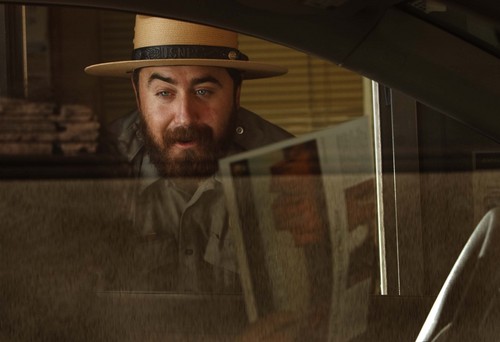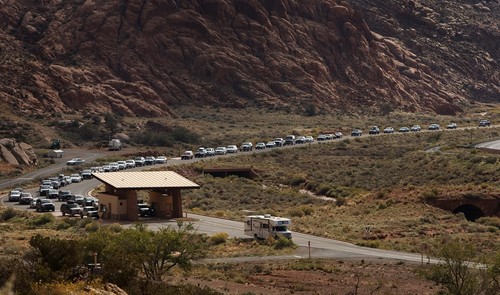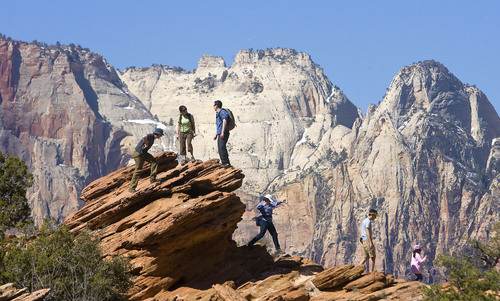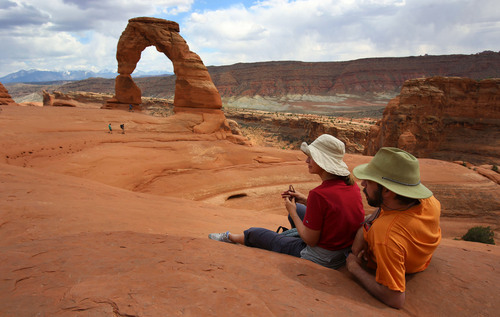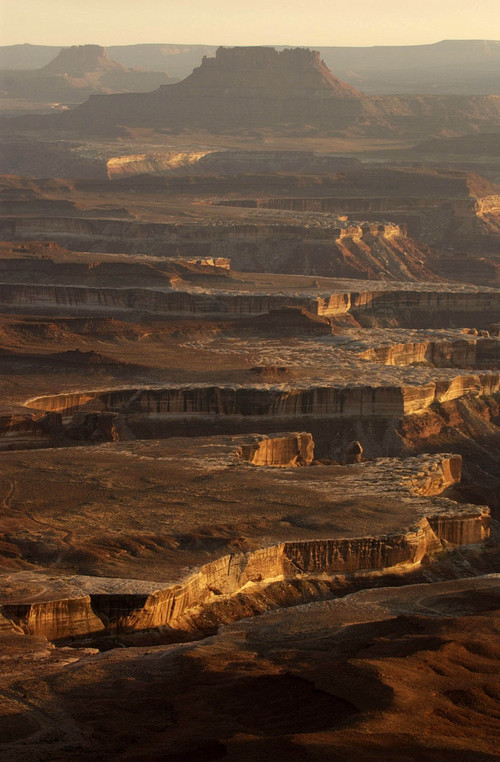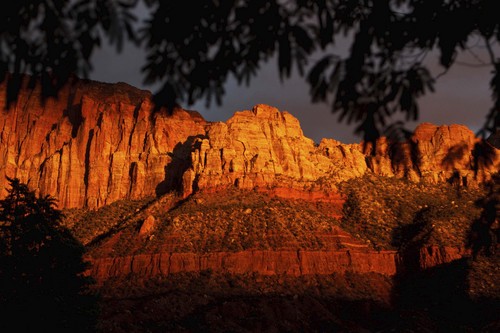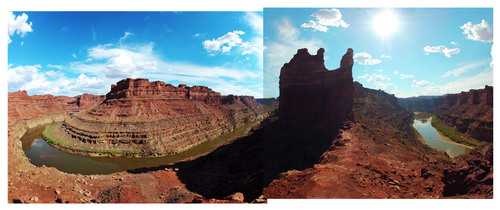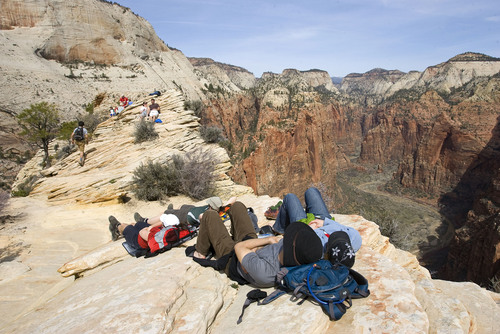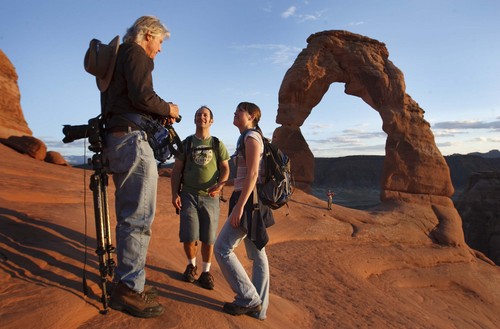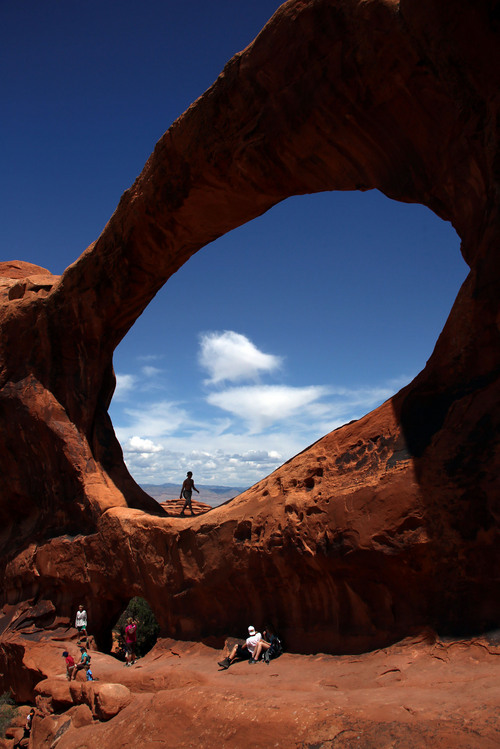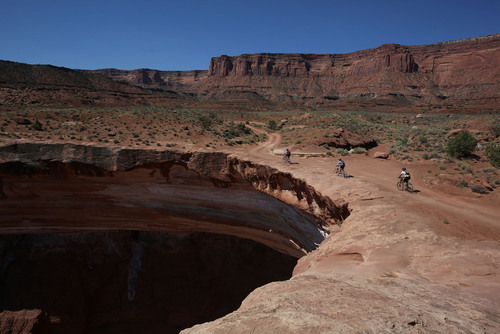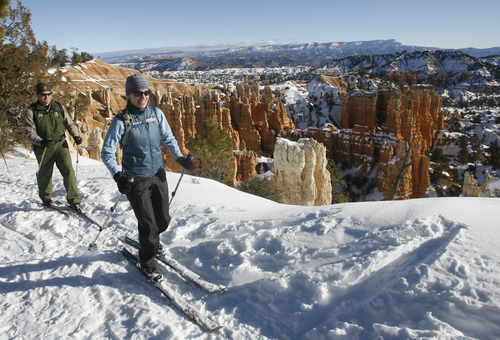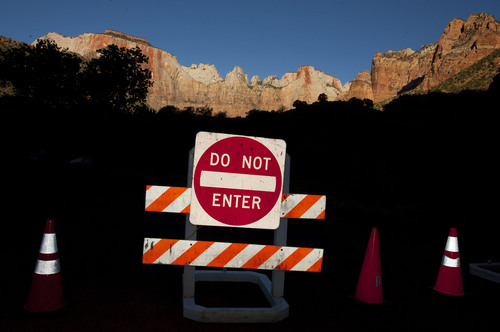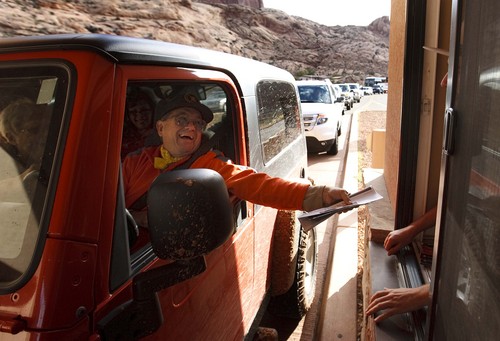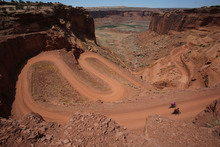This is an archived article that was published on sltrib.com in 2014, and information in the article may be outdated. It is provided only for personal research purposes and may not be reprinted.
A decision by the Utah Legislature to fund the opening of national parks during the federal government shutdown in 2013 did more than provide memories for visiting tourists.
A report released Monday shows Utah's investment of nearly $1 million to open nine national park units in October paid off in a big way, to the tune of a $10 return for every $1 spent to operate the parks for six days until the shutdown ended.
"Utahns understand very clearly how important our national parks are to our state economy, particularly in rural Utah," Gov. Gary Herbert said Monday in a written statement. "The report released by the Department of the Interior shows what we have understood all along: We made the right decision to reopen our parks during the federal government shutdown."
Washington's decision to allow Utah to pay to staff the national parks defused a possible confrontation at Glen Canyon National Recreation Area, where county officials wanted to take over the park without waiting for permission.
The report, "Effects of the October 2013 Government Shutdown on National Park Service Visitor Spending in Gateway Communities," showed that closing the parks erased a big chunk of local business revenue. By stepping in, the Utah Legislature may have saved some from closing up shop.
"One silver lining [from the shutdown] was that communities realized just how much benefit they get from the parks being open," Interior Secretary Sally Jewell said in a conference call Monday. "Economic reports are a great way of qualifying that and we intend to keep it up."
The 16-day government shutdown ran from October 1-16. It resulted in the loss of $414 million in revenue and 7.88 million fewer visitors that month across the nation, according to the report.
"October is a popular time and shutting down [parks] is a real challenge for the local communities," Jewel said. "I hope we don't ever have to go there again. Governors worked with me and my teammates to donate state funds to reopen the parks. They could not afford to have workers idle."
Great Smoky Mountains National Park (in Tennessee and North Carolina) appears to have suffered the greatest impact, with an estimated loss of 329,101 visitors and $25.6 million.
Four Utah parks — Arches National Park ($3.9 million estimated loss), Bryce Canyon National Park ($3.6 million), Glen Canyon National Recreation Area ($3.4 million) and Zion National Park ($3.1 million) — were on a list of 45 parks that lost more than $2 million during the shutdown.
Those Utah national park units were ranked between numbers 20 and 26 on the list of the highest decline in visitor spending during the shutdown.
The parks would have ended up higher on the list if Utah hadn't stepped in and opened them for six days on the state tab.
It cost $999,432 for Utah to open Arches, Bryce Canyon, Capitol Reef, Zion, Cedar Breaks National Monument, Glen Canyon, Natural Bridges National Monument and Rainbow Bridge National Monument for less than a week, but that translated into nearly 154,000 visitors.
Compilers of the report attributed 16 percent of visitor spending to Utah parks ($1.59 million) within National Park Service boundaries, but estimate $8.36 million was spent in the communities around the parks, while the majority of parks around the country remained closed.
Other states that followed Utah's lead in opening parks include: Arizona (Grand Canyon National Park); Colorado (Rocky Mountain National Park); New York (Statue of Liberty National Monument); South Dakota (Mount Rushmore National Memorial); and Tennessee (Great Smoky Mountains National Park).
Utah's gateway communities would include Springdale outside of Zion National Park, Moab near Arches and Canyonlands national parks, Bryce Canyon City near Bryce Canyon National Park and Torrey near Capitol Reef National Park.
Also Monday, Jewell and Park Service Director Jonathan Jarvis released the "2012 National Park Visitor Spending Effects" report. It shows more than 280 million visitors ventured into national parks in 2012, generating $26.75 billion for the U.S. economy and supporting 243,000 jobs.
Utah's 13 national park units saw more than 9.5 million visitors in 2012, and those visitors spent $613.7 million while supporting 9,416 jobs, according to the report.
"From Zion and Bryce Canyon to Golden Spike National Historic Site, Utah's national parks attract more than 9 million visitors a year from across the country and around the world," Sue Masica, director of NPS's Intermountain Region, said in a prepared release. "This new report confirms that national park tourism is a significant driver in the national economy, returning $10 for every $1 invested in the National Park Service. This reality makes parks tourism an important factor in Utah's economy as well. It's a result we all can support."
Twitter: @BrettPrettyman


